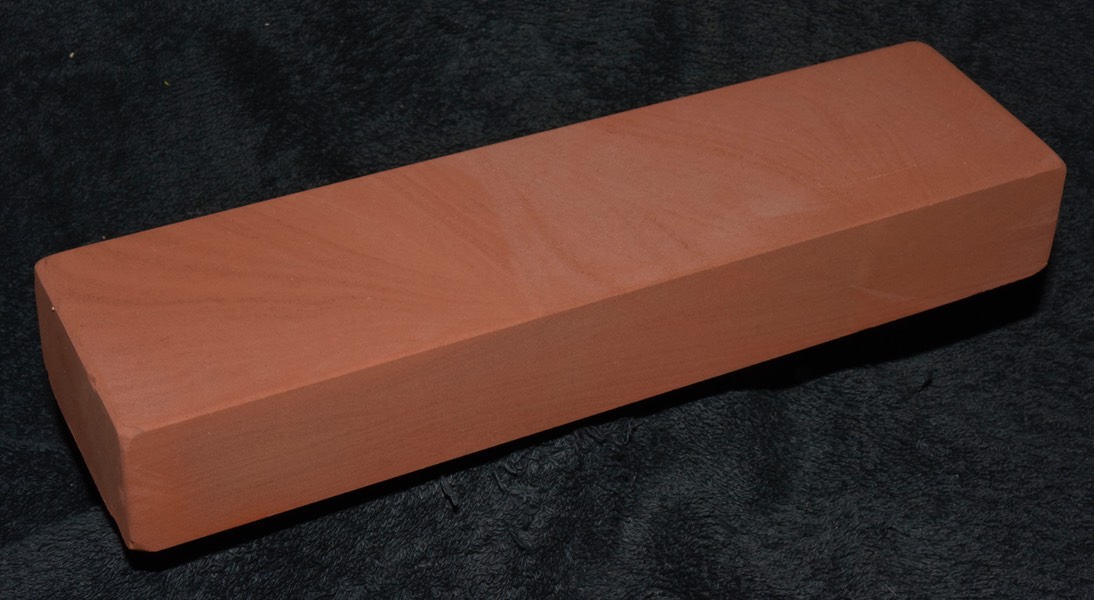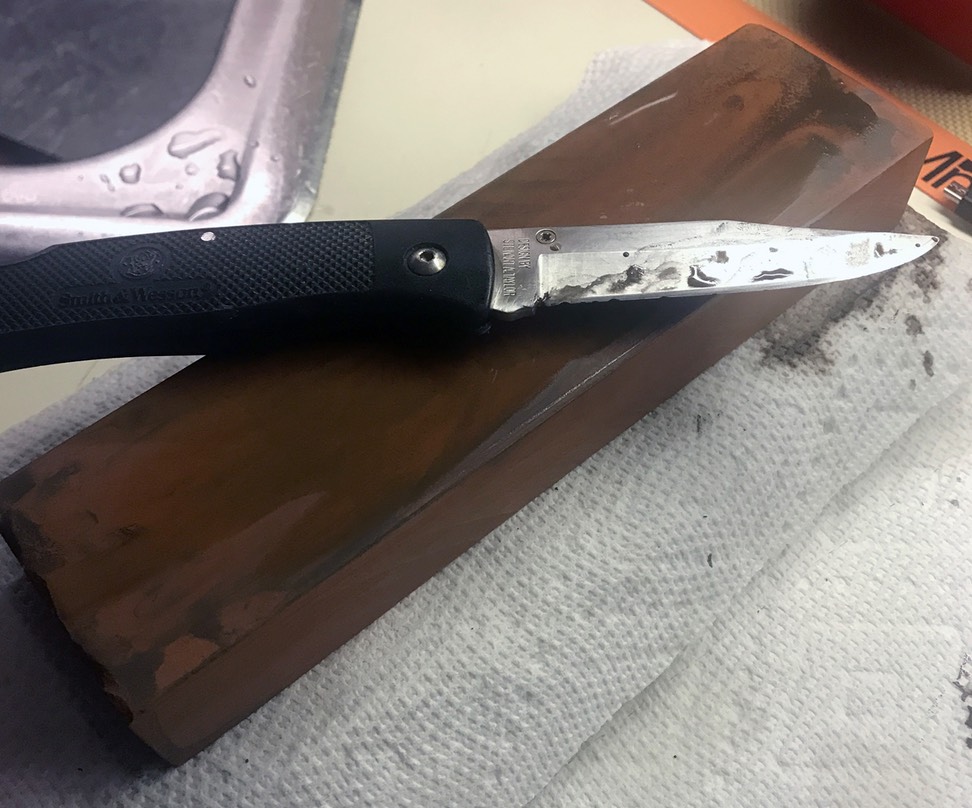
The Celebrated Red Bay Oil Stone
This was purchased from the TOS Hone Works in Scotland. The seller did not have any exacting information. I recall seeing boxdd and labeled examples of these stones for sale on auction sites between 2000 and 2005. At that time, I assumed then that they were sort of a Dalmore Blue variant due to the quarry using similar boxes and labels, and the swirly pattern.
This Red Bay hone stone was easy to lap, it arrived with a lot of saw marks on the sides and they were removed quickly with a 140x Atoma. The swarf from lapping was very muddy, very slightly grainy, and very red.
This example is obviously porous and not so dense, water soaked in easily. The overall feel is that of a hardened claystone, maybe not quite shale but on the way there. The density seems average, not light or flighty. When held, the heft is notable. I did not do a SG test due a lack of interest in the outcome.
This is not a very hard stone, and there is a hint of brittleness, similar – in a way – to how a Dalmore Yellow stone can be. I do feel that the blue, yellow and now ths red are all part of the same family of mud/clay stone that was baked via igneous intrusion from below. I believe all 3 would be classed as sedimentary but possibly having experienced some low-grade metamorphosis.
I did some sharpening on this stone, using water, oil, and water and oil simultaneously. While it is not an aggressive stone, it does cut well enough but the cutting action is not all that typical when compared to a synthetic stone.
I would refer to this Red Bay Stone as a soft-cutter, same cutting action as a TOS or Dalmore Blue. The edge it left on 58 HRC steel was similar to what I can get from an 600x - 800x synthetic.
BUT - the burr. And this is the weird part, the burr comes up quick enough but it felt like what I’d expect from that 58 HRC steel on a good quality 2k or 3k synth. The resulting edge had some tooth, but not too much tooth.The edge was able to push cut paper smoothly and the burr did come off cleanly and easily.
Under magnification, the striations were decently uniform but there were a few deep rogue gouges. Overall the honing pattern was visually comparable to what I’d see when honing on synthetic stones north of 320x but south of 1k. Visuals like this are heavily dependent on pressure, the steel, and the type of tool so it is impossible to make one single absolute comparison.
I was able to keep water on the stone for a decent amount of time but it did all eventually soak in. Keeping the surface wet enough was easy though. I don’t think I’d soak it and don’t know why anyone would feel a need to do so. Sharpening on the Red Bay with oil was interesting, not necessarily better, but the stone did seem to load faster. A mix of oil and water using my Tomoglide lube turned out to be pretty good.
While this is not a remarkable sharpening stone, it is really nice to look at and it does do a pretty decent job of putting an edge on a knife.
The stone’s feedback could be classified overall as smooth but there is a certain grittiness to it. The feedback shifts during use as though the swarf is somewhat friable. Not the abrasive itself, just the swarf seems to lose some of the ‘grinding’ sensation. For cutlery this is fine but I don’t get the feeling that honing razors on it is something I want to explore.
